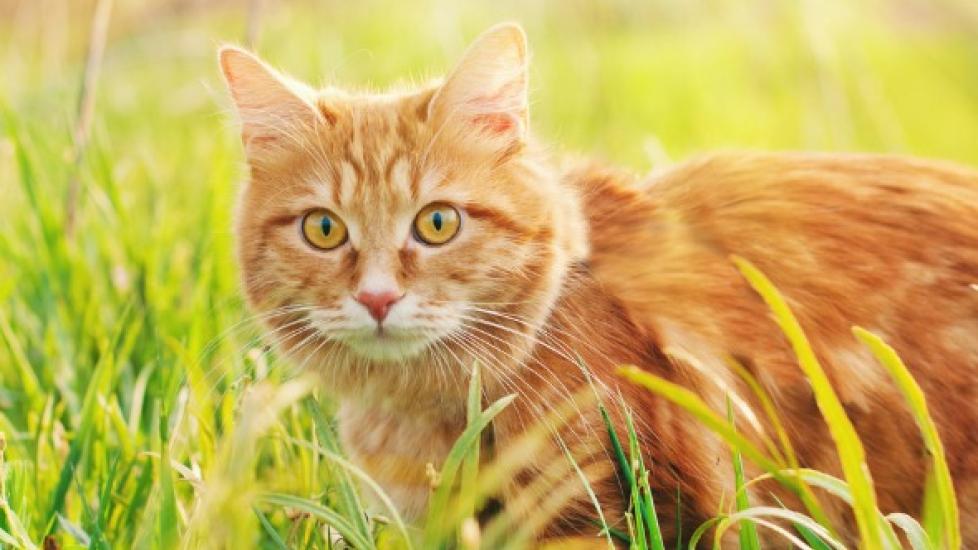Pancreatic Cancer in Cats
Insulinoma in Cats
Insulinomas are malignant neoplasms — fast growing cancerous tissue — of the beta cells in the pancreas. The beta cells primarily make and secrete insulin, which has a variety of effects in the body, the primary one being to regulate glucose throughout the body's cells. Because insulinomas secrete excessive insulin, the blood stream becomes low in glucose (hypoglycemia), which causes weakness and/or neurological problems. This disease does not effect cats as much as it does some other household pets, but it can and does occur.
Symptoms
The most common symptom of an insulinoma is physical collapse or loss of consciousness (syncope). Seizures, extreme weakness, and other neurological abnormalities are also common. Because the insulin is released periodically, symptoms are not consistent and frequency of symptoms is not necessarily predictable.
Diagnosis
If your cat should collapse and a blood sample indicates low glucose, your veterinarian will suspect an insulinoma and will follow through with further tests to confirm it. Multiple blood samples may need to be taken over a period of time to determine a persistent low glucose concentration. Your veterinarian will also need to determine your cat's insulin concentration at the lowest glucose concentration.
It is common to fast from food before these tests are performed in order to determine true glucose levels. However, cats that do not eat are at high risk for a disease called hepatic lipidosis, so if your cat has not been eating due to loss of appetite, your veterinarian will advise you on the correct method for feeding (or not feeding) your cat before each test.
An amended insulin:glucose ratio (AIGR) may be useful when your cat's insulin level is in the lower end of the normal range. Insulinoma is still the expected finding in these types of cases. If the insulin level is inappropriately high for the decreased glucose level, an insulinoma may still be present.
Ultrasound, computed tomography (CT), or magnetic resonance imaging (MRI) can be helpful in determining the extent of the pancreatic tumor and how much it is metastasizing. Typically, insulinomas will not metastasize to the lungs; however, chest X-rays may indicate other types of neoplasias as the cause for persistently decreased glucose. Scintigraphy, a form of imaging that uses radioactive isotopes to identify abnormal tissue, can also be used to identify the location of primary insulinomas and metastasis.
Treatment
If your cat has collapsed, or is suffering from seizures because of an insulinoma, medical emergency treatment usually will consist of an immediate administration of glucose. If you cat collapses or has a seizure at home, corn syrup can be given for a temporary increase in blood sugar levels, but medical attention is needed for this condition, so consulting with your veterinarian is critical. Your veterinarian may also give your cat glucose containing fluids and/or steroids to counteract the insulin effects.
If your cat's health status, along with imaging of the tumor, indicates that potential value can be gained from surgery, removal of the tumor is usually recommended. Hypoglycemia may be resolved by removing the part of the pancreas that has the tumor on it. However, if there is significant metastases or functional tumor cells in the remainder of the pancreas, additional treatment will still be necessary. Likewise, if the tumors are generalized, or there are other health concerns, medical management may be advised as the primary mode of treatment.
Prednisolone is a steroid that stimulates the formation of glucose and is often a cornerstone of medical treatment. Other medications that might be used to treat insulinoma include:
- Diazoxide
- Octreotide
- Glucagon
- Chemotherapeutic agents, like streptozocin
Dietary management is frequently used in conjunction with other treatments. In fact, you may be able to minimize the amount of medication or the need for additional treatments by feeding your cat small, frequent amounts of easily digestible moderate proteins, moderate fats, and plenty of fluids. Canned foods can meet many of these needs.
Clinically, the most important dietary technique is the frequency of the meals. Essentially, this technique is used to limit the fluctuations in insulin that instigate the hypoglycemic episodes. Controlling symptoms of hypoglycemia is ultimately the goal. Your veterinarian will assist you in developing a diet plan for your cat.
Living and Management
Surgery, along with dietary precautions, can dramatically lessen hypoglycemia and insulinoma symptoms for your cat. In many cases continued medical treatment and dietary management will be necessary. Frequent check-ups to determine the progress of this condition and the treatments being used for it will be necessary for managing a recurrence, and for fine tuning the treatment plan.
Help us make PetMD better
Was this article helpful?
